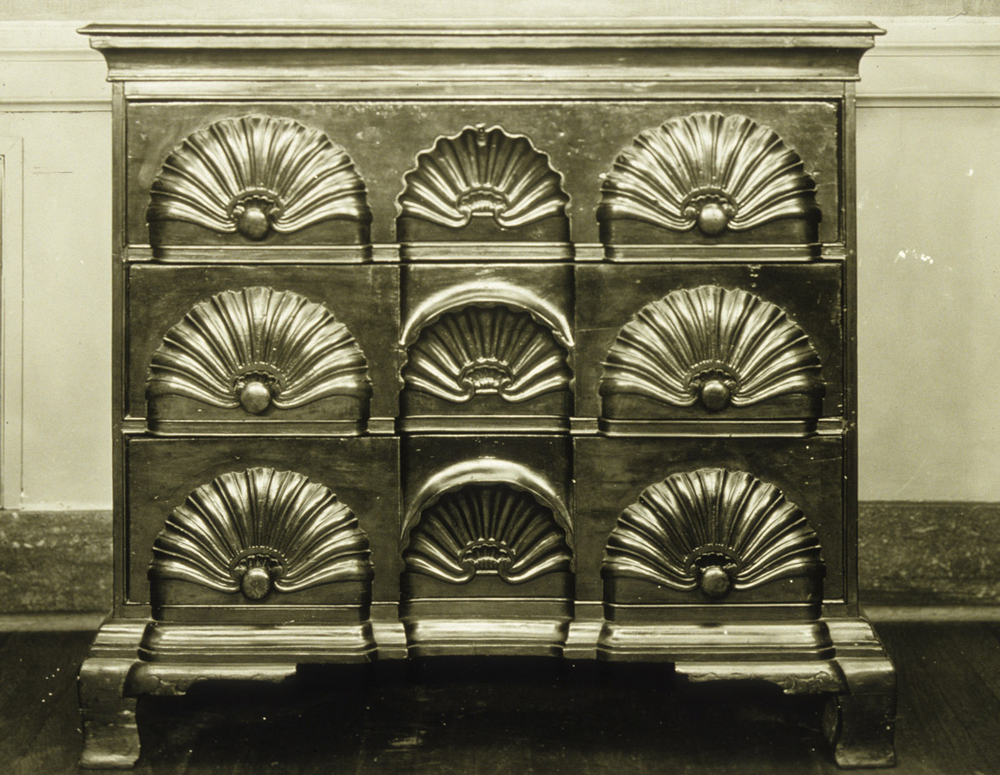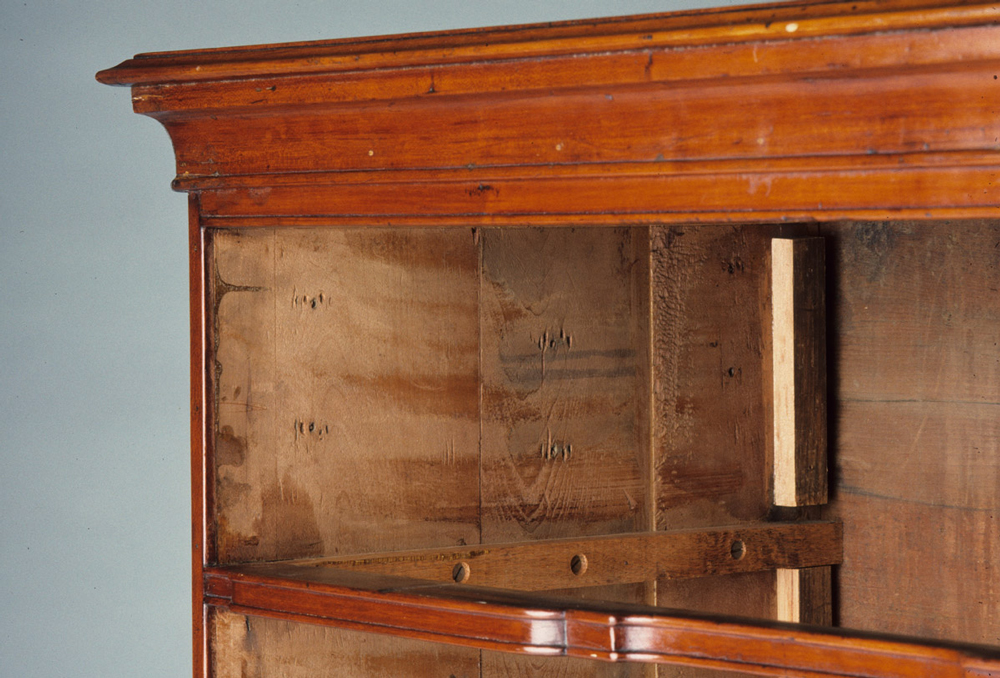Too Good to Be Believed?
On May 11, 1929, five months before the stock market crash, a good friend of Henry Francis du Pont sent him a photograph of a "unique" chest with shell motifs carved on all three drawers. Du Pont immediately offered to buy it. Careful not to rely on the photograph alone, he sent his "expert," noted antiques dealer Albert J. Collings, to examine the chest. Collings proclaimed it to be genuine although he noted that it had been repaired (the feet were replaced); he therefore valued the chest at $8,000. The owner, Mrs. Rufus B. Richardson, also sought expert advice. From a black and white photograph, her "expert" suggested that the chest had been made in Newport, Rhode Island, "probably the work of one of the Townsends," whose furniture was competitively collected and highly priced. When asked to put a price on the chest, Mrs. Richardson offered to sell it for $25,000.
Du Pont considered the price too high, explaining that the chest lacked its original brasses and he would never be able to find an old set that fit. He also noted that the feet had been badly repaired and would need to be replaced. Finally, he cited, the chest was not a Newport piece but had been made in the Connecticut Valley, detracting from its value. His offer of $20,000 (equivalent to just over $280,000 today) was accepted, and du Pont sent his chauffeur and truck to collect it.
Who was Fooled?
The chest had been exhibited at the Worcester Art Museum in 1929 as a genuine antique. The seller’s daughter provided du Pont with the provenance, saying it had been bequeathed to her mother by Miss Frances H. Butler (1838-1920) of New Haven, Connecticut. She did not know, however, how Miss Butler had acquired it.
Mrs. Richardson believed that her chest was genuine and sold it without any intention to deceive. Henry Francis du Pont clearly wanted it to be real but should have been on his guard when considering a piece so "unique," a term that should send chills up the spines of careful collectors. Joseph Downs, Winterthur’s first curator, had his doubts about the chest, but it was not publicly identified as a fake until after du Pont’s death. There was clearly no intention to deceive du Pont, but the intent of the original maker seems suspicious.
Further examination of this chest of drawers has identified it as a reworking of old wood augmented by new materials―in other words, a deliberate fake. The top is fabricated from assembled drawer fronts or table leaves, and the sides are made from reused drawer fronts. Normally, if a chest of drawers is decorated with shells, it has three, all on the top drawer; the other drawers would only have blocking, forming a visual column below the shell motifs. Today we benefit from nearly a century of looking and learning―information not available to early collectors.
Chest of drawers
Probably made in Connecticut; 1890-1920
Cherry, white pine
Bequest of Henry Francis du Pont 1957.507
This is the photograph that was given to Henry Francis du Pont in 1929. If you compare it to the chest, you can see that du Pont replaced the wooden knobs on the drawers and added a scrolled skirt, which makes the chest conform more closely to genuine examples made in New London County, Connecticut.
Photograph sent to Henry Francis du Pont; 1929
Winterthur Museum
Although discrepancies in the method of construction of this fake should be obvious from careful visual examination, the inside of the chest clearly shows that it does not conform to 18th-century practices. The sides are made from reused drawer fronts, which can be seen more clearly in this photograph. The drawer glides have been attached to the sides with modern, countersunk screws.
Details of construction
Winterthur Museum, photo by Herb Crossan
Bibliography
Kaye, Myrna. Fake, Fraud, or Genuine?: Identifying Authentic American Antique Furniture. Boston: Little, Brown, 1987. Winterthur’s nine-shell chest is discussed on pp. 110−12.



